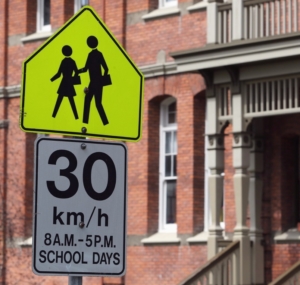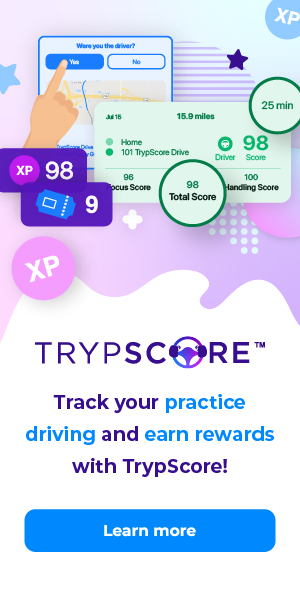Steve Wallace: New tech brings new licensing questions

School zones in Victoria are in effect from 8 a.m. to 5 p.m. while playground zones are dawn to dusk. The speed limit is generally 30 kilometers per hour.Fines for breaking the speed limit range from about $200 to $500.
It’s that time of year again. Students are returning to regularly scheduled classes, much to the delight of many parents. The collective sigh of parental relief can be sensed in most every neighbourhood.
Traffic signs in the shape of a schoolhouse, with an accompanying 30 km/h tab attached beneath the pentagon, govern the speed from 8 a.m. to 5 p.m. each school day. It should be noted that these signs are not in effect on the weekends, when extracurricular activities take place on school grounds.
The reduced speed begins at the school zone sign and ends when a driver has reached the corresponding school-zone sign on the opposite side of the road, facing the opposite direction. Drivers are expected to react to the shape of a regulatory sign, since there is no writing on the back, to identify the end of the zone.
The police do a good job of enforcement in the initial stages of each school year. Raising awareness by being seen helps protect students.
Kids are excited to return to school, see their friends and make new acquaintances. Younger students are often oblivious to the dangers that can be encountered to and from school.
Crossing guards are a welcome sight for approaching drivers. They give a relative certainty of supervision. Getting eye-to-eye contact with these crossing guards allows for a degree of predictability at school crossings.
School-bus drivers are very judicious about the use of flashing lights and a mechanical stop-sign arm extended from the bus driver’s side of the bus. No motor vehicles are permitted to pass in both directions while the stop arm and flashing red alternating lights are engaged. Proceeding past an engaged school bus is only permitted when there is a boulevard separating opposite traffic flow. Otherwise, both directions must halt, and only proceed when the arm and stop sign on the bus recede.
Parents delivering students to the school grounds must heed the direction of a supervising staff member. It is difficult to imagine parents as one of the hazards on the school grounds. Those looking for a quick drop-off or pick-up can cause all sorts of problems. Most schools have devised a single-file, one-direction, supervised access-egress system.
Quick action by anyone in school zones is a recipe for disaster. Doing the predictable, at a reasonable speed, is a way of increasing safety in school zones. It is up to all drivers to be vigilant, not only at the beginning of the school year, but all year long.
On a previous topic: A police officer and driving examiner pointed out an inconsistency in a past column. Drivers must turn from the closest lane to the immediate lane when making a right turn at an intersection, onto a multi-lane road. The same is not true when making a left turn onto a multi-lane road at an intersection. It is advisable but not a legal requirement to turn from the closest lane to the immediate lane on a left turn. Drivers are permitted to flare to an outside adjacent lane when making such a multi-lane left turn. It is not illegal but might be dangerous, especially if an oncoming driver attempts a right-on-red manoeuvre at the same time.
Steve Wallace is the owner of Joan Wallace Driving School. He is a former vice-president of the Driving Schools Association of the Americas, a registered B.C. teacher and a University of Manitoba graduate.


